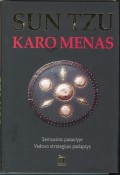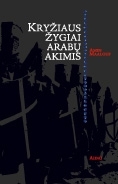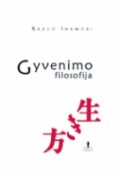 Authors:
Authors:
Yamamoto Tsunetomo
Translated by:
Ruzgys, Linas
Translated from:
English
Published on:
2006
“Above all, the Way of the Samurai should be in being aware that you do not know what is going to happen next, and in querying every item day and night. Victory and defeat are matters of the temporary force of circumstances.” Yamamoto Tsunetomo with these words describes elite seventeenth century Japanese warrior life line, the way of the samurai in the book – “Hagakure. The Secret Book of the Samurai”.
“Hagakure” or “Leaves in the shade” is not an educational introduction, a set of ideas or instructions on how to live. This book is a Japanese philosophy line of thought, which lasted for centuries. In formation of the summing-up of the rising sun warriors – Samurai Code of Conduct. Copyright the aggregated records can be found not only in the short anecdotes, but the age of the samurai life reflections that give insight and highlights – loyalty, dedication and determination, as the main core and the noble human values, but also provides valuable tips on how to do the right thing in a given situation. More
 Authors:
Authors:
Suzuki, Koji
Translated by:
Olekaitė, Vytautė
Translated from:
English
Published on:
2006
Micuo Ando is a forensic expert, who is still struggling with his son‘s death. One day on his autopsy table arrives his old classmate Takayama Ryuji. While doing autopsy Ando found tumor in Ryuji‘s heart, which is believed to be his cause of death. But Ando is puzzled because the tumor appears to be similar to smallpox which was eradicated 30 years ago. Ando was even more surprised by newspaper piece that was poking through Ryuji‘s bell. Newspaper piece with various numbers reminded Ando of his friend‘s cryptography hobby. Finding the newspaper‘s numbers interesting, he tries to decode them. He decodes them and finds they spell: r-i-n-g. More
 Authors:
Authors:
Sun Tzu
Translated by:
Ruzgys, Linas
Translated from:
English
Published on:
2006
The Art of War is an ancient Chinese military treatise attributed to Sun Tzu (544–496 BC), a high-ranking military general, strategist and philopsopher. It presents a philosophy of war for managing conflicts and winning battles. However there are some doubts about his authorship. Some historians are convinced that there is unlikely that Sun Tzu created China’s entire body of tactical studies, “basic concepts and common passages seem to argue in favour of a comprehensive military tradition and evolving expertise, rather than creation himself“. The book was first translated into the French language in 1772 by French Jesuit Jean Joseph Marie Amiot. The first annotated English language translation was completed and published by Lionel Giles in 1910. More
 Authors:
Authors:
Ishiguro, Kazuo
Translated by:
Liutkutė, Jovita
Translated from:
English
Published on:
2006
“Never let me go” – it’s a worldwide known book written by Kazuo Ishiguro which in 2005 got nominated for Man Booker’s prize. Based on this book the movie has been released with the same title and it has received positive feedback from the viewers. Kazuo Ishiguro was born in 1954 Japan. His family resided in Nagasaki until he turned five and moved to United Kingdom. The writer has started his career right when he graduated from East England University majoring in creative writing. His first written book got straight into spotlight and in 1982 it got Winifred Holty prize. More
 Authors:
Authors:
Seung Sahn
Translated by:
Vitkūnas, Jonas
Translated from:
English
Published on:
2006
„The Compass of Zen“ is a book about principal teachings and traditions of the Buddhist religion, written by one of the most famous Zen masters nowadays – Master Seung Sahn. In this book, Master writes about the most important branches of Buddhism, their differences, and tries to help even the most oblivious readers to understand and develop an interest in this unique religion.
„First you have to be enlightened, then you can teach all the other beings“, – so it is written in the very first chapter of this book. These words represent the main goal and point of the whole Buddhism religion. Master Seung Sahn firstly sequentially and clearly explains Buddhism as one, joint teaching, and talks about its goals and main point. Only then, having explained it as one religion, Master starts to divide it into three branches – Hinayana, Mahayana and Zen Buddhism. Every single one of these branches gets a part in the book, where Master talks about the branch’s particular teachings and main differences from the other two. Explaining everything like that, Master helps the reader to understand each branch’s point and uniqueness. More
 Authors:
Authors:
Deng, Ming-Dao
Translated by:
Dagys, Saulius
Translated from:
English
Published on:
2006
\”Everyday Tao: living with balance and harmony\” is one of the best selling books by Deng Ming-Dao about Tao and its use in daily life. Tao – religious, philosophical system or idea originated in China that covers the whole existence and emphasizes its power in all the existing things in the world. According to the author of the book, Tao is everywhere and we have to follow it in order to feel the harmony in life. The character \”Tao\” means a person running along a path. The book shows us More
 Authors:
Authors:
Maalouf, Amin
Translated by:
Žalgaitė, Jūratė
Translated from:
French
Published on:
2006
In his writing, Lebanese author and scientist Amin Maalouf analyzes topics related to migration, war and history. Civil war escapee to France, shares his experience as well. Nevertheless, A. Maalouf’s first historical novel ’’Crusade Through Arba Eyes’’ remains his most popular and significant book.
While taking a stance of unbiased observer, author writes about crusade in The Middle East in the XII – XIII centuries. Contrary to usual European narrative, events during this period are represented through easterner’s perspective. Despite cruelty, immorality and arrogance shown by knights on their expeditions, the author remains objective. According to More
 Authors:
Authors:
Rabindranath Tagore
Translated by:
Nistelis, Vytautas
Translated from:
English
Published on:
2006
Rabindranath Tagore (1861 – 1941) was known as India’s nations son, brilliant, poetic persona, who, for Westerners was familiar for his poems, which he translated them to English himself. “Song-Offerings” – can be described as a hymn for the Creator of the Universe, God, the absolute force of life, which was expressed from a person’s heart. In these “songs” one can find ecstasy, something mystical and mesmerizing. Tagore wrote these poems without mentioning one God, that is why many readers from different religions could have comprehended them in their own way. Feel different emotions. They could have seen them as a form of prayer.
The subject in this book is not asking God for anything. It follows the road the God has given it, regardless how spiteful, challenging it is. Through these poems both author and the subject managed to express everlasting love. This endearing and warm feeling was shown to every living being: for nature, for earth, for the God and life itself. The biggest upshot is displayed in Rabindranath Tagore’s last poems, where the subject faces the true meaning of life and purity of soul. All of this happens after a laborious journey of trying to understand the true meaning of life from the beginning to the end of one’s existence.
 Authors:
Authors:
Inamori, Kazuo
Translated by:
Devėnaitė, Violeta
“If you have the qualities of the leader, use them for the world, society, a group of people – but not only for yourself” (Kazuo Inamori)
At age 27, Kazuo Inamori established Kyocera Corporation, which has grown into a multinational high-tech conglomerate employing over 30,000 people. In this book he tells about philosophy of his life, which led to such a successful life. More
 Authors:
Authors:
Murakami, Haruki
Translated by:
Nauronaitė, Jūratė
Translated from:
English
Published on:
2005
„Norwegian wood“– it is a book, which was read by everyone in Japan but in the West, this book also received extraordinary popularity. „Norwegian wood“ could be described as story of love, life and death. The story’s protagonist and narrator is Toru Watanabe, who looks back on his days as a college student living in Tokyo. When he had gone away from his hometown he left not only his family, girlfriend but also painful memories about his best friend Kidzuki’s death. This will not be the only one death in this book: suicide will be chosen by Toru’s first love Naoko. Suicide in Japanese culture is quite differently understood than in a European: it is a way to avoid of shame and distress. Maybe of this reason death but not life is chosen by other at least three characters. More
 Authors:
Yamamoto Tsunetomo
Authors:
Yamamoto Tsunetomo 
 Authors:
Suzuki, Koji
Authors:
Suzuki, Koji  Authors:
Sun Tzu
Authors:
Sun Tzu  Authors:
Ishiguro, Kazuo
Authors:
Ishiguro, Kazuo  Authors:
Seung Sahn
Authors:
Seung Sahn  Authors:
Deng, Ming-Dao
Authors:
Deng, Ming-Dao  Authors:
Maalouf, Amin
Authors:
Maalouf, Amin  Authors:
Rabindranath Tagore
Authors:
Rabindranath Tagore  Authors:
Inamori, Kazuo
Authors:
Inamori, Kazuo  Authors:
Murakami, Haruki
Authors:
Murakami, Haruki